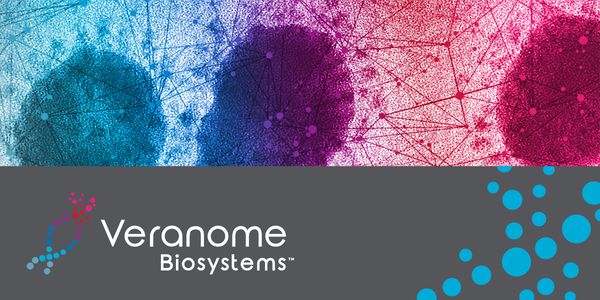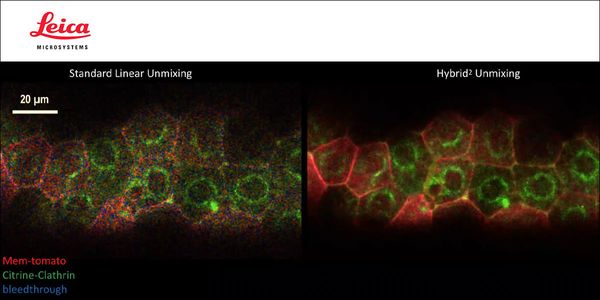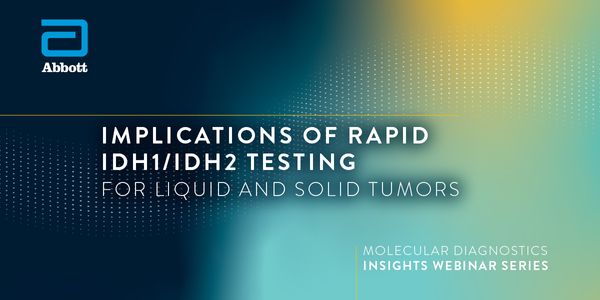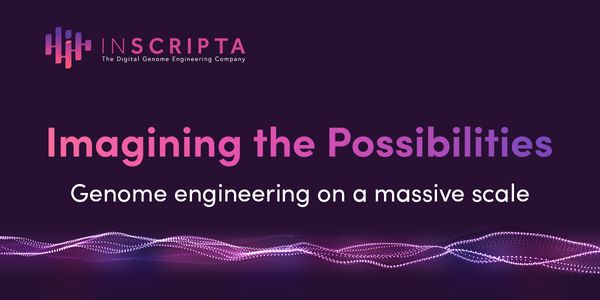Parallel Computing
Parallel computing is a high-performance type of computation where many calculations are performed at the same time. Parallel computing is used to solve large problems by dividing them into many small problems which can be solved simultaneously. Smartphones and laptops are examples of devices which use parallel computing.
-
AUG 24, 2022 | 7:00 AMDate: August 24, 2022 Time: 7:00am (PDT), 10:00pm (EDT), 4:00pm (CEST) Light field microscopy was first introduced in 2006, and allows users to capture the 4D light field within the microsco...Speaker: Matthew Kose-Dunn , Phil Allen , Liang Gao , Shu JiaSponsored By: Teledyne PhotometricsAPR 19, 2022 | 7:30 AMC.E. CREDITSWhile early genetic diagnosis can guide critical care management, the turnaround time for whole genome based diagnostic testing is months. Recent programs in neonatal populations have reduce...APR 19, 2022 | 5:30 AMC.E. CREDITSLong read Structural Variation calling remains a challenging but highly accurate way to identify complex genomic alterations. To address this challenge, we developed Sniffles2, a successor t...AUG 25, 2021 | 9:00 AMDate: August 25, 2021 Time: 9:00am PDT During this interactive webinar you can ask questions, get answers, and engage with Taiana De Oliveira from AstraZeneca, Steven Litster, Brian Skjerven...Speaker: Taiana Maia de Oliveira , Steve Litster , Brian Skjerven , Natalie White , Ieva Drulyte, PhDPresented at: Thermo Fisher Scientific - Electron Microscopy Webinars
Sponsored By: Thermo Fisher ScientificJUL 15, 2021 | 9:00 AMDate: July 15, 2021 Time: 9:00am (PDT), 12:00pm (EDT) The Pisces workflow robust, easy-to-use, end-to-end multi-omics solution for highly multiplexed targeted Spatial RNA analysis. VeranomeB...DEC 16, 2020 | 8:00 AMDate: December 16, 2020 Time: 8:00am (PST), 11:00am (EST) Molecular imaging of living specimens offers a means to draw upon the growing body of high-throughput molecular data to better under...SEP 30, 2020 | 9:00 AMWhile transformative, first-generation CRISPR technologies remain limited across multiple important dimensions including scalability, editing efficiency, types of modifications available, an...Speaker: Nandini Krishnamurthy, PhDJUL 16, 2020 | 10:00 AMDATE: July 16, 2020 TIME: 10:00 am PDT This seminar reviews clinical utility of adopting rapid IDH1/2 testing in both hematological and solid tumors and describes the adjusted workflow devel...MAY 14, 2020 | 10:00 AMDATE: May 14, 2020 TIME: 10:00am PT, 1:00pm ET Massively parallel genome engineering enables rapid and simultaneous evaluation of genotype-phenotype relationships at a genomic scale....MAR 11, 2020 | 6:00 AMThe locomotion of humans and other animals requires a seamless flow of information from sensory modalities all the way to the motor periphery. As such, locomotion is an excellent system for...Speaker: Michael Dickinson, PhD , Anthony Azevedo, PhD , Clare Howard, PhD , Luke Brezovec , Sasha Rayshubskiy , Emily PalmerPresented at: Neuroscience Virtual Event Series 2020
FEB 26, 2020 | 6:00 AMCenthaquine (previously used names, centhaquin and PMZ-2010; International Non-proprietary Name (INN) recently approved by WHO is centhaquine) is being developed by us as a first-in-class re...Speaker: Professor Anil Gulati, MD, PhDPresented at: Drug Discovery & Development Virtual Event Series 2020
SEP 11, 2019 | 6:00 AMMVRSION is a bench and informatic system which employs simultaneous weighted analysis eight of nine 16S hyper variable regions. We use Fluidigm Juno to amplify and index the these regions in...JUN 20, 2019 | 6:00 AMInherited disorders affect millions of people globally. These diseases significantly impact lives of patients and their families, and in addition, also results in substantial socio-economic i...Speaker: Raed Samara, PhD , Rupert Yip, PhDMAR 13, 2019 | 7:40 AMThe human brain has a remarkable ability to store and retrieve information. Detailed memories can be formed after as little as one exposure, and those memories can be retained for decades. Im...MAR 15, 2018 | 10:30 AMMachine learning approaches to pattern discovery in protein-protein interaction networks of Huntington’s disease brain and model organisms are revealing novel connections of the disease...SEP 14, 2017 | 9:00 AMThe human large intestine houses trillions of microorganisms which collectively form the highly diverse microbial community known as the gut microbiota. The gut microbiota performs many funct...OCT 06, 2016 | 7:30 AMIntra-tumor heterogeneity is a major obstacle to cancer treatment. Existing single-cell studies of intra-tumor heterogeneity have largely focused on DNA mutations; functional heterogeneity is...Speaker: Shyam Prabhakar, PhDOCT 05, 2016 | 7:30 AMThe talk will first report on a new patented method of counting CTCs based on the metabolism of tumor cells, that favors acidification of their near environment. In order to maintain the acid...Speaker: Giacinto Scoles, PhDMAY 11, 2016 | 10:30 AMC.E. CREDITSWe are at a time where traditionally risk-adverse health care systems and their IT architecture are confronted with the deluge of data at a massive scale and tremendous variability. In many H...MAY 13, 2015 | 10:30 AMAdvanced sequencing technologies have made population scale whole genome sequencing a possibility. However, current strategies for analysis of this data rely upon parallelization approaches t...Speaker: Peter White, PhD, James HirmasPresented at: Genetics and Genomics Virtual Event Series 2015
MAY 13, 2015 | 9:00 AMA well done RNA-Seq experiment can provide the most comprehensive, accurate and unbiased way to study gene expression, alternative splicing, RNA variation and RNA structure. The past few yea...OCT 30, 2014 | 1:30 PMStructural pathways are important. They are essential to the understanding of how oncogenic mutations work and to figuring out alternative parallel pathways in drug resistant mutants. Structu...Speaker: Ruth Nussinov, PhDAUG 21, 2013 | 10:00 AMC.E. CREDITSMassively parallel sequencing technology has proven to enable the identification of driver genetic alterations in patients' tumors that may be suppressed by targeted therapies. Through retros...
AUG 24, 2022 | 7:00 AM
Date: August 24, 2022 Time: 7:00am (PDT), 10:00pm (EDT), 4:00pm (CEST) Light field microscopy was first introduced in 2006, and allows users to capture the 4D light field within the microsco...
Speaker:
Matthew Kose-Dunn
, Phil Allen
, Liang Gao
, Shu Jia
Sponsored By: Teledyne Photometrics
APR 19, 2022 | 7:30 AM
C.E. CREDITS
While early genetic diagnosis can guide critical care management, the turnaround time for whole genome based diagnostic testing is months. Recent programs in neonatal populations have reduce...
APR 19, 2022 | 5:30 AM
C.E. CREDITS
Long read Structural Variation calling remains a challenging but highly accurate way to identify complex genomic alterations. To address this challenge, we developed Sniffles2, a successor t...
AUG 25, 2021 | 9:00 AM
Date: August 25, 2021 Time: 9:00am PDT During this interactive webinar you can ask questions, get answers, and engage with Taiana De Oliveira from AstraZeneca, Steven Litster, Brian Skjerven...
Speaker:
Taiana Maia de Oliveira
, Steve Litster
, Brian Skjerven
, Natalie White
, Ieva Drulyte, PhD
Presented at: Thermo Fisher Scientific - Electron Microscopy Webinars
Sponsored By: Thermo Fisher Scientific
Sponsored By: Thermo Fisher Scientific
JUL 15, 2021 | 9:00 AM
Date: July 15, 2021 Time: 9:00am (PDT), 12:00pm (EDT) The Pisces workflow robust, easy-to-use, end-to-end multi-omics solution for highly multiplexed targeted Spatial RNA analysis. VeranomeB...
DEC 16, 2020 | 8:00 AM
Date: December 16, 2020 Time: 8:00am (PST), 11:00am (EST) Molecular imaging of living specimens offers a means to draw upon the growing body of high-throughput molecular data to better under...
SEP 30, 2020 | 9:00 AM
While transformative, first-generation CRISPR technologies remain limited across multiple important dimensions including scalability, editing efficiency, types of modifications available, an...
Speaker:
Nandini Krishnamurthy, PhD
JUL 16, 2020 | 10:00 AM
DATE: July 16, 2020 TIME: 10:00 am PDT This seminar reviews clinical utility of adopting rapid IDH1/2 testing in both hematological and solid tumors and describes the adjusted workflow devel...
MAY 14, 2020 | 10:00 AM
DATE: May 14, 2020 TIME: 10:00am PT, 1:00pm ET Massively parallel genome engineering enables rapid and simultaneous evaluation of genotype-phenotype relationships at a genomic scale....
MAR 11, 2020 | 6:00 AM
The locomotion of humans and other animals requires a seamless flow of information from sensory modalities all the way to the motor periphery. As such, locomotion is an excellent system for...
Speaker:
Michael Dickinson, PhD
, Anthony Azevedo, PhD
, Clare Howard, PhD
, Luke Brezovec
, Sasha Rayshubskiy
, Emily Palmer
Presented at: Neuroscience Virtual Event Series 2020
FEB 26, 2020 | 6:00 AM
Centhaquine (previously used names, centhaquin and PMZ-2010; International Non-proprietary Name (INN) recently approved by WHO is centhaquine) is being developed by us as a first-in-class re...
Speaker:
Professor Anil Gulati, MD, PhD
Presented at: Drug Discovery & Development Virtual Event Series 2020
SEP 11, 2019 | 6:00 AM
MVRSION is a bench and informatic system which employs simultaneous weighted analysis eight of nine 16S hyper variable regions. We use Fluidigm Juno to amplify and index the these regions in...
JUN 20, 2019 | 6:00 AM
Inherited disorders affect millions of people globally. These diseases significantly impact lives of patients and their families, and in addition, also results in substantial socio-economic i...
Speaker:
Raed Samara, PhD
, Rupert Yip, PhD
MAR 13, 2019 | 7:40 AM
The human brain has a remarkable ability to store and retrieve information. Detailed memories can be formed after as little as one exposure, and those memories can be retained for decades. Im...
MAR 15, 2018 | 10:30 AM
Machine learning approaches to pattern discovery in protein-protein interaction networks of Huntington’s disease brain and model organisms are revealing novel connections of the disease...
SEP 14, 2017 | 9:00 AM
The human large intestine houses trillions of microorganisms which collectively form the highly diverse microbial community known as the gut microbiota. The gut microbiota performs many funct...
OCT 06, 2016 | 7:30 AM
Intra-tumor heterogeneity is a major obstacle to cancer treatment. Existing single-cell studies of intra-tumor heterogeneity have largely focused on DNA mutations; functional heterogeneity is...
Speaker:
Shyam Prabhakar, PhD
OCT 05, 2016 | 7:30 AM
The talk will first report on a new patented method of counting CTCs based on the metabolism of tumor cells, that favors acidification of their near environment. In order to maintain the acid...
Speaker:
Giacinto Scoles, PhD
MAY 11, 2016 | 10:30 AM
C.E. CREDITS
We are at a time where traditionally risk-adverse health care systems and their IT architecture are confronted with the deluge of data at a massive scale and tremendous variability. In many H...
MAY 13, 2015 | 10:30 AM
Advanced sequencing technologies have made population scale whole genome sequencing a possibility. However, current strategies for analysis of this data rely upon parallelization approaches t...
Speaker:
Peter White, PhD, James Hirmas
Presented at: Genetics and Genomics Virtual Event Series 2015
MAY 13, 2015 | 9:00 AM
A well done RNA-Seq experiment can provide the most comprehensive, accurate and unbiased way to study gene expression, alternative splicing, RNA variation and RNA structure. The past few yea...
OCT 30, 2014 | 1:30 PM
Structural pathways are important. They are essential to the understanding of how oncogenic mutations work and to figuring out alternative parallel pathways in drug resistant mutants. Structu...
Speaker:
Ruth Nussinov, PhD
AUG 21, 2013 | 10:00 AM
C.E. CREDITS
Massively parallel sequencing technology has proven to enable the identification of driver genetic alterations in patients' tumors that may be suppressed by targeted therapies. Through retros...























